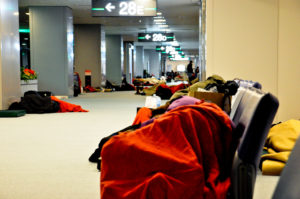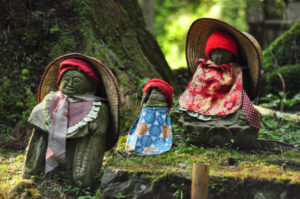By Katie Allie
 Hi, I’m Katie. Once upon a time I was a kindergarten teacher, and life was pretty good. I loved coming home each day with paint on my hands and funny stories to tell. I got to travel a lot, too. Every time I had a break, I was somewhere new, managing to travel on a very tight budget, and coming home with even better stories to tell. Since then, I started my own travel consulting company, and I’ve collected many moments and mishaps. I’ve haggled, made friends and found hidden gems. I am hooked on getting lost in the world, and I want to show you how wonderful it is, too.
Hi, I’m Katie. Once upon a time I was a kindergarten teacher, and life was pretty good. I loved coming home each day with paint on my hands and funny stories to tell. I got to travel a lot, too. Every time I had a break, I was somewhere new, managing to travel on a very tight budget, and coming home with even better stories to tell. Since then, I started my own travel consulting company, and I’ve collected many moments and mishaps. I’ve haggled, made friends and found hidden gems. I am hooked on getting lost in the world, and I want to show you how wonderful it is, too.
On March 11, 2011, I stepped off a plane at Tokyo’s Narita Airport following a 13-hour flight. I was standing in a security line when I felt vibrations, almost like I was standing in a parking garage and a car was passing underneath me—except the vibrations never seemed to stop. I barely had time to think about it before I saw a light shimmy its way out of the ceiling in a spray of debris, and I realized I was experiencing an earthquake—a 9.0 earthquake, as it turns out.
I spent the next three minutes cowering on the floor of the airport. Time expanded and contracted with the walls while I covered my head with a backpack and tried to focus my panic on the woman quietly praying on the floor next to me. These were some of the most agonizing minutes of my life—I was also positive they were some of my last.

My view while spending the night in Tokyo’s Narita Airport following the earthquake.
“We apologize for the earthquake,” came an announcement as the shaking stopped. “Please, be brave.”
The end of that day would see the Earth’s axis shift a few degrees, a devastating tsunami, the beginning of a nuclear meltdown and many, many people missing or dead. By all standards I was exceptionally fortunate. The next 24 hours blurred by in runway evacuations and jetlagged exhaustion. I also found outright awe at the kindness of Japanese people trying to soothe frightened passengers trapped at the airport as hundreds of aftershocks rolled through. By the next night I’d managed to get myself on a flight out, but those minutes I spent caught between here and there have stuck with me. And so, it is only fitting that I recently decided I needed to go back.
I spent time in Tokyo and Kyoto, but it was Mount Koya, or Koya-san, in the Wakayama Prefecture that I was really coming for. It requires some effort to get there. From Kyoto, I took no fewer than two buses, three trains and one cable car to arrive at the monastery-laden town. The mountains there overlapped in such a way that it appeared they’d been slapped together in a child’s hasty art project: acute paper triangles jutting up pointedly to the sky in tones of emerald and bamboo and forest green. I checked in to the monastery where I’d be spending the night, leaving my shoes in a cabinet by the door and exchanging them for soft slippers. I was already in another world.
I didn’t come here for the monasteries, though. I came instead to see the UNESCO Sacred Heritage Site of Okunoin, a Buddhist cemetery that dates back more than 1,000 years and is said to be the largest and holiest in Japan. It is an exceptionally atmospheric passageway between life and death—a silent track that coils under a canopy of centuries-old Japanese cedars with monuments and gravestones strewn about like macabre building blocks.
Ever since that day in March when the earthquake hit, Japan has called me back. Perhaps I was drawn to the cemetery because there is a part of me that relates to that feeling of hovering between this world and the next. I remember making the decision to quickly zip my passport inside my jacket pocket in case I needed to be identified as the airport building stretched and yawned in upheaval around me, facing the fact that the universe is as heartbreakingly decisive as it is forgiving and beautiful. Time was as arbitrary then as it was in this cemetery that has seen a millennium of mourners and grateful pilgrims swish through its gates. I am a grateful pilgrim who got more time.

Jizo statues of different shapes and sizes, dressed in red to designate them as helpers to children who have passed away. Grieving parents often dress them as they mourn.
In every wrinkle of the blanket of Buddhist headstones that cover this mountainside were Jizo statues, seemingly no two alike. Jizo statues are tiny people, similar in nature to a Buddha statue. They are traditionally protectors of women, children and travelers, and some are dressed in red, denoting that they help children who have died as they cross over—silent shepherds into the next realm. In Japan, they are often placed at intersections so travelers may choose the correct way.
I stopped on the path in front of a line of Buddhas, each different in their demeanor. All was completely still, save for the hum of insects and gentle sifting of wind through leaves. I was covered in goosebumps. “Choose the one that calls to you, and bathe him with cups of water,” a monk instructed me. I paused before choosing one that was fat and smiling, aware that I had the privilege of building a happy life after the earthquake, a possibility that was abruptly cut off for many people. I thought of that day huddled on the ground in the airport, concentrating on the woman praying next to me. I silently offered up a prayer of my own: for here and there, for crossroads and for all of us who are just passing through.
Katie’s Travel Tips
Koya-san is a bit off the beaten path, but a worthwhile detour and full of a great deal more history and things to explore than the monasteries and cemetery. It’s not especially time consuming to reach, but does require a bit of effort.
A Kansai Thru Pass covers this entire journey but a Japan Rail Pass does not cover this trip. From the JR Osaka train station, take the Midosuji subway line to Namba subway station. At Namba, walk to the Nankai Railway Station, which is nearby. Go to the ticket counter and purchase the Koyasan World Heritage Pass, starting from about 2800 Yen, if you do not already have a Kansai Thru Pass. This gets you a discounted round-trip rate back to Osaka, your cable car fare up and down the mountain, unlimited bus rides in the town and reduced fare on museum entries. From there, the train ride is about an hour and a half on the Nankai Koya rail line to Gokurakubashi train station. From Gokurakubashi train station, take the Koya-san cable car up to Mount Koya. In true Japanese style, there are helpful people waiting at the top to guide you to the correct bus for your temple stay.
Book your temple stay in advance—yes, it’s worth it—but be sure to arrive by 5 p.m., as most temples require. There is a night tour of the cemetery given by an English-speaking monk at the Eko-in temple that I highly recommend if it’s running the day you’re there. See www.night.koyasan-okunoin.com for details. It is another world. Enjoy.


